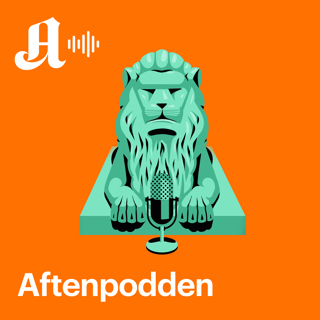
What Boeing Knew
In testimony before a House committee on Wednesday, Dennis A. Muilenburg, Boeing’s chief executive, said, “If we knew everything back then that we know now, we would have made a different decision.” Congress is investigating two crashes of Boeing 737 Max jets which killed 346 people, cost the company billions of dollars and raised new questions about government oversight of aviation. So what did Boeing executives know about the dangers of the automated system implicated in the crashes — and when did they know it? Guest: Natalie Kitroeff, who covers the economy for The Times. For more information on today’s episode, visit nytimes.com/thedaily. Background reading: Boeing successfully lobbied to reduce government oversight of airplane design.Evidence presented to House investigators on Wednesday revealed that Boeing was aware of potentially “catastrophic” concerns about the 737 Max’s safety before the first crash. Subscribe today at nytimes.com/podcasts or on Apple Podcasts and Spotify. You can also subscribe via your favorite podcast app here https://www.nytimes.com/activate-access/audio?source=podcatcher. For more podcasts and narrated articles, download The New York Times app at nytimes.com/app.
31 Okt 201926min

The Promise and Peril of Vaping, Part 2: The Story of Juul
When Juul was created, the company’s founders told federal regulators that its product would save lives. Those regulators were eager to believe them. Today, part two in our series on the promise and the peril of vaping.Guest: Sheila Kaplan, an investigative reporter for The New York Times covering the intersection of money, medicine and politics. For more information on today’s episode, visit nytimes.com/thedaily. Background reading: Here’s the first episode in this two-part series, describing how one man’s mysterious death changed our understanding of vaping and its consequences.The federal government has repeatedly delayed or weakened efforts to regulate e-cigarettes, allowing a new generation to become addicted to nicotine. Subscribe today at nytimes.com/podcasts or on Apple Podcasts and Spotify. You can also subscribe via your favorite podcast app here https://www.nytimes.com/activate-access/audio?source=podcatcher. For more podcasts and narrated articles, download The New York Times app at nytimes.com/app.
30 Okt 201927min

The Life and Death of Abu Bakr al-Baghdadi
After a five-year international manhunt, the leader of the Islamic State, who at one point controlled a caliphate the size of Britain, was killed in a raid by elite United States forces in Syria over the weekend.Today, we explore the life and death of Abu Bakr al-Baghdadi — and the legacy he leaves behind. Guest: Rukmini Callimachi, who covers terrorism and the Islamic State for The Times, in conversation with Natalie Kitroeff. For more information on today’s episode, visit nytimes.com/thedaily. Background reading: Kurdish forces were essential in the mission to track and identify Mr. al-Baghdadi. President Trump’s decision to withdraw American troops from northern Syria threw the operation into turmoil.Some survivors of Islamic State brutality said Mr. al-Baghdadi’s death came too late. “He deserves a worse and more abhorrent death,” one added. Subscribe today at nytimes.com/podcasts or on Apple Podcasts and Spotify. You can also subscribe via your favorite podcast app here https://www.nytimes.com/activate-access/audio?source=podcatcher. For more podcasts and narrated articles, download The New York Times app at nytimes.com/app.
29 Okt 201927min

The Promise and Peril of Vaping, Part 1: A Mystery in Nebraska
When John Steffen died, his family had little doubt that a lifetime of cigarette smoking was to blame. Then, the Nebraska Department of Health got an unusual tip.Today, we begin a two-part series on the promise and the peril of vaping. Guest: Julie Bosman, a national correspondent for The New York Times, spoke with Kathleen Fimple and her daughter, Dulcia Steffen, in Omaha, Nebraska. For more information on today’s episode, visit nytimes.com/thedaily. Background reading: John Steffen trusted vaping could help him quit smoking. Instead, he became one of vaping’s first victims in Nebraska. Vaping can cause lung damage resembling toxic chemical burns, according to researchers at the Mayo Clinic. Subscribe today at nytimes.com/podcasts or on Apple Podcasts and Spotify. You can also subscribe via your favorite podcast app here https://www.nytimes.com/activate-access/audio?source=podcatcher. For more podcasts and narrated articles, download The New York Times app at nytimes.com/app.
28 Okt 201923min

‘A Prophet’: The Zeal of Bernie Sanders Supporters
At a rally in New York City last weekend, Senator Bernie Sanders drew the largest crowd of his presidential campaign — at a moment when his candidacy may be at its most vulnerable. After a heart attack this month, Mr. Sanders faced a challenge in convincing voters that he had the stamina to run both a campaign and the country. His first rally since his hospital stay attracted supporters still resentful of his loss in 2016, and of a party establishment they feel favored Hillary Clinton over Mr. Sanders in the primary. The question for Democratic candidates now is how to respond to this grievance and harness the fervor of Sanders supporters to mobilize support for the Democratic Party more broadly.Guest: Alexander Burns, who covers national politics for The Times. For more information on today’s episode, visit nytimes.com/thedaily. Background coverage: Revitalized by an endorsement from Representative Alexandria Ocasio-Cortez, Sanders proclaimed “I am back” as he rebooted his campaign after a health scare.The response to Sanders’s rally from public housing residents in Queens exposed the race and class tensions in a gentrifying slice of New York City. Subscribe today at nytimes.com/podcasts or on Apple Podcasts and Spotify. You can also subscribe via your favorite podcast app here https://www.nytimes.com/activate-access/audio?source=podcatcher. For more podcasts and narrated articles, download The New York Times app at nytimes.com/app.
25 Okt 201929min

A Victim of the Shadow Government
Before the career diplomats working in Ukraine discovered a “highly irregular” power structure around President Trump determined to undermine and derail them, a Trump cabinet secretary said the same thing happened to him.Today, David J. Shulkin, former secretary of Veterans Affairs, speaks about his experience with “a dual path of decision making in the White House” and how falling out of favor with President Trump’s political appointees ended his tenure. Guest: David J. Shulkin, a former secretary of the Department of Veterans Affairs in the Trump administration. For more information on today’s episode, visit nytimes.com/thedaily. Background listening and reading:Mr. Shulkin’s story matches a pattern described that career diplomats have described to the impeachment inquiry. Here’s a “Daily” episode about their testimony.Back channels to the White House are at the heart of the investigation. Subscribe today at nytimes.com/podcasts or on Apple Podcasts and Spotify. You can also subscribe via your favorite podcast app here https://www.nytimes.com/activate-access/audio?source=podcatcher. For more podcasts and narrated articles, download The New York Times app at nytimes.com/app.
24 Okt 201926min

The ‘Most Damning’ Impeachment Testimony Yet
The Democrats leading the impeachment inquiry are calling testimony from the acting envoy to Ukraine the “most damning” yet, implicating President Trump himself in a quid pro quo over military aid to the country. William B. Taylor Jr., a career diplomat who has served under both Democratic and Republican administrations, prepared a 15-page opening statement for investigators on Tuesday. He described his testimony as “a rancorous story about whistle-blowers, Mr. Giuliani, side channels, quid pro quos, corruption and interference in elections.” In his statement, Mr. Taylor documented two divergent channels of United States policymaking in Ukraine, “one regular and one highly irregular.” He said Mr. Trump had used the shadow channel to make America’s relationship with Ukraine — including a $391 million aid package — conditional on its government’s willingness to investigate one of his political rivals, former Vice President Joseph R. Biden Jr., and his family. The question of a quid pro quo for the military aid has been pursued by House Democrats since the beginning of the impeachment inquiry. In Mr. Taylor, investigators have a former ambassador testifying under oath that the allegations are true. Guest: Nicholas Fandos, who covers Congress for The New York Times. For more information on today’s episode, visit nytimes.com/thedaily.Background coverage: Here are six key takeaways from Mr. Taylor’s opening statement to impeachment investigators.This is the evidence collected and requested in the impeachment inquiry so far. Subscribe today at nytimes.com/podcasts or on Apple Podcasts and Spotify. You can also subscribe via your favorite podcast app here https://www.nytimes.com/activate-access/audio?source=podcatcher. For more podcasts and narrated articles, download The New York Times app at nytimes.com/app.
23 Okt 201920min

Trapped in Syria, Part 2: A Plea to Parliament
Yesterday on “The Daily,” we met Kamalle Dabboussy, who said his daughter had been tricked by her husband into joining the Islamic State. His daughter and three grandchildren are being held in a Syrian detention camp for the relatives of ISIS fighters.When we left off, Mr. Dabboussy had just received a call from a journalist that suggested his family’s situation was about to become far more precarious. President Trump had announced that he would withdraw U.S. troops from the Syrian border, and Kurdish forces who had been guarding the prisons were expected to abandon their posts, leaving the detainees’ lives in imminent danger.Today, we follow Mr. Dabboussy’s struggle to convince the Australian government that his daughter and her children are worth saving — despite their ties to the Islamic State.Guest: Livia Albeck-Ripka, a reporter for The Times in Melbourne, Australia, spoke with Kamalle Dabboussy, whose daughter Mariam is trapped in Syria with her children. For more information on today’s episode, visit nytimes.com/thedaily. Background coverage: Here’s the first episode in this two-part series, in which we introduced Kamalle Dabboussy and his fight to bring his family home from a war zone.Mr. Dabboussy is one of a cohort of parents in Australia lobbying the government to help release their loved ones from detention camps in northern Syria. Subscribe today at nytimes.com/podcasts or on Apple Podcasts and Spotify. You can also subscribe via your favorite podcast app here https://www.nytimes.com/activate-access/audio?source=podcatcher. For more podcasts and narrated articles, download The New York Times app at nytimes.com/app.
22 Okt 201932min






















